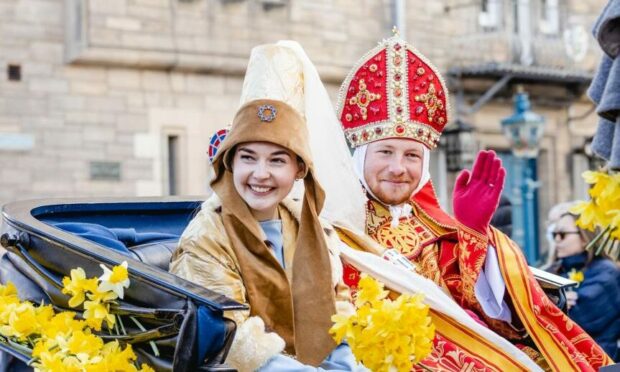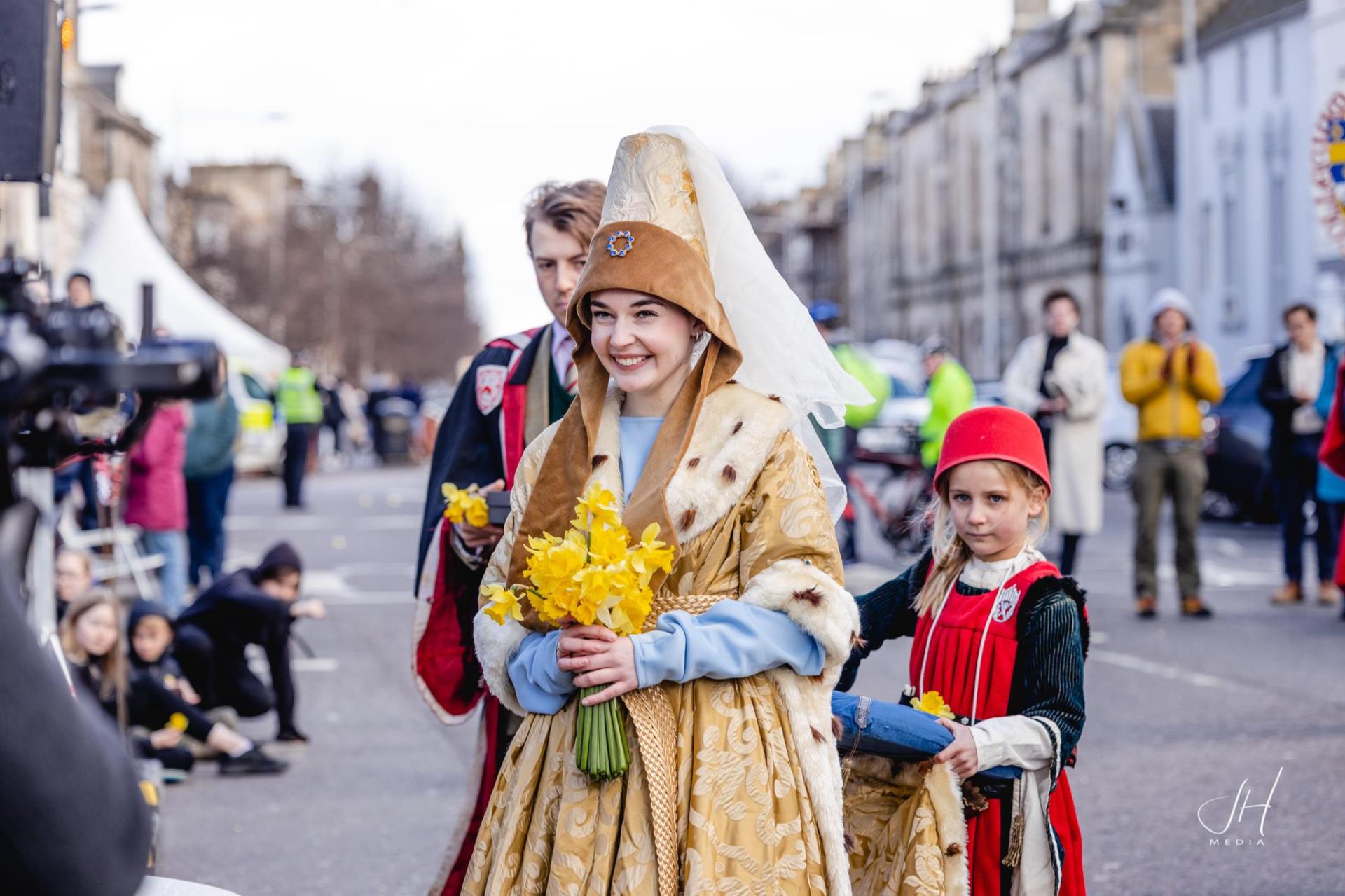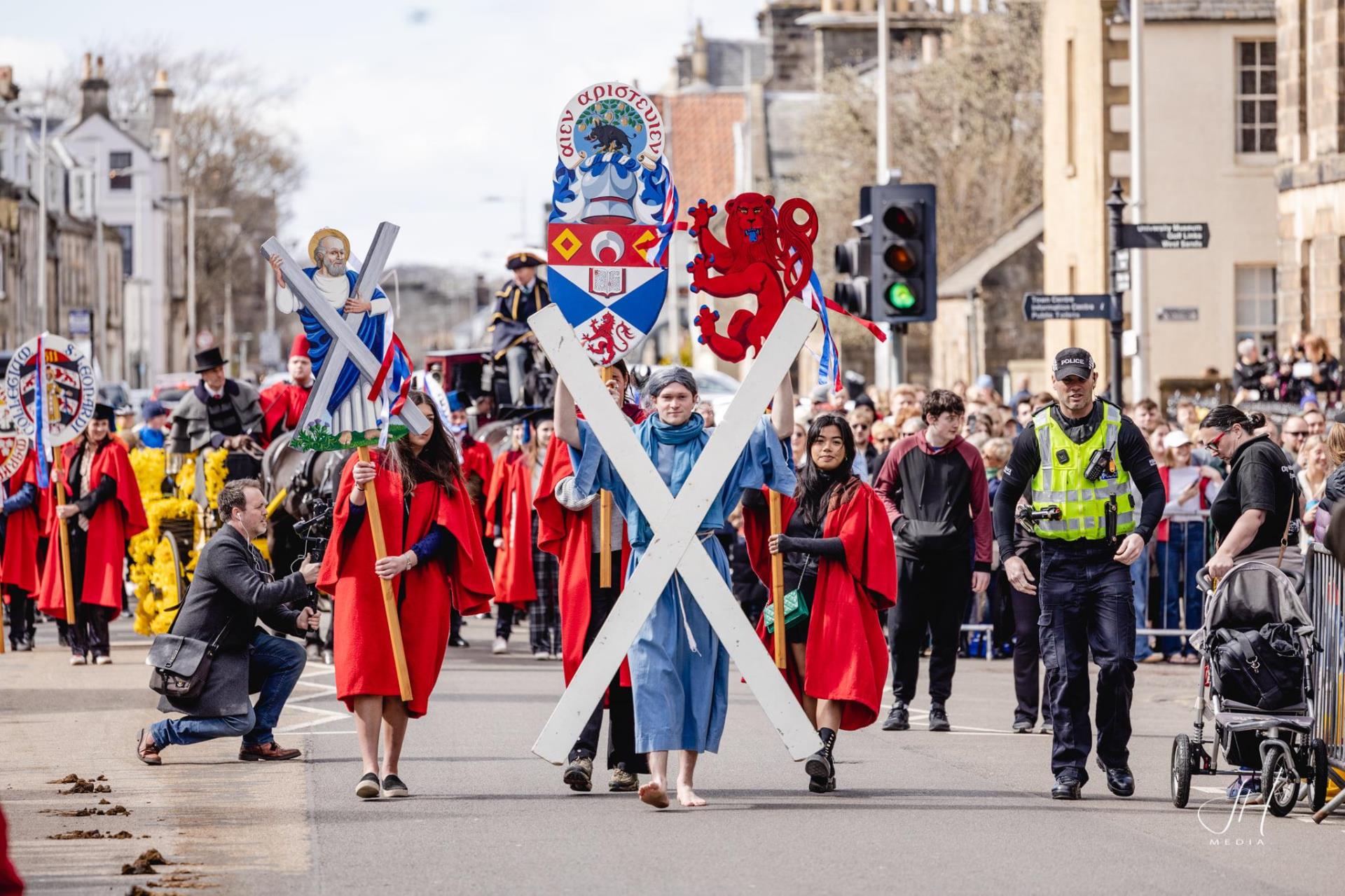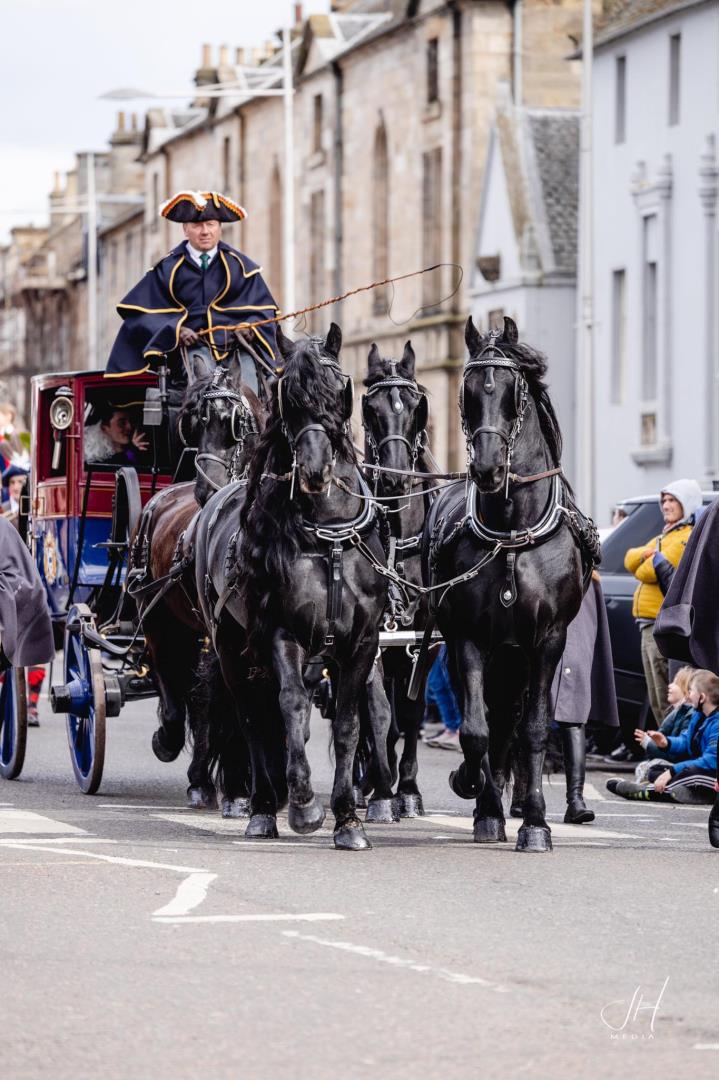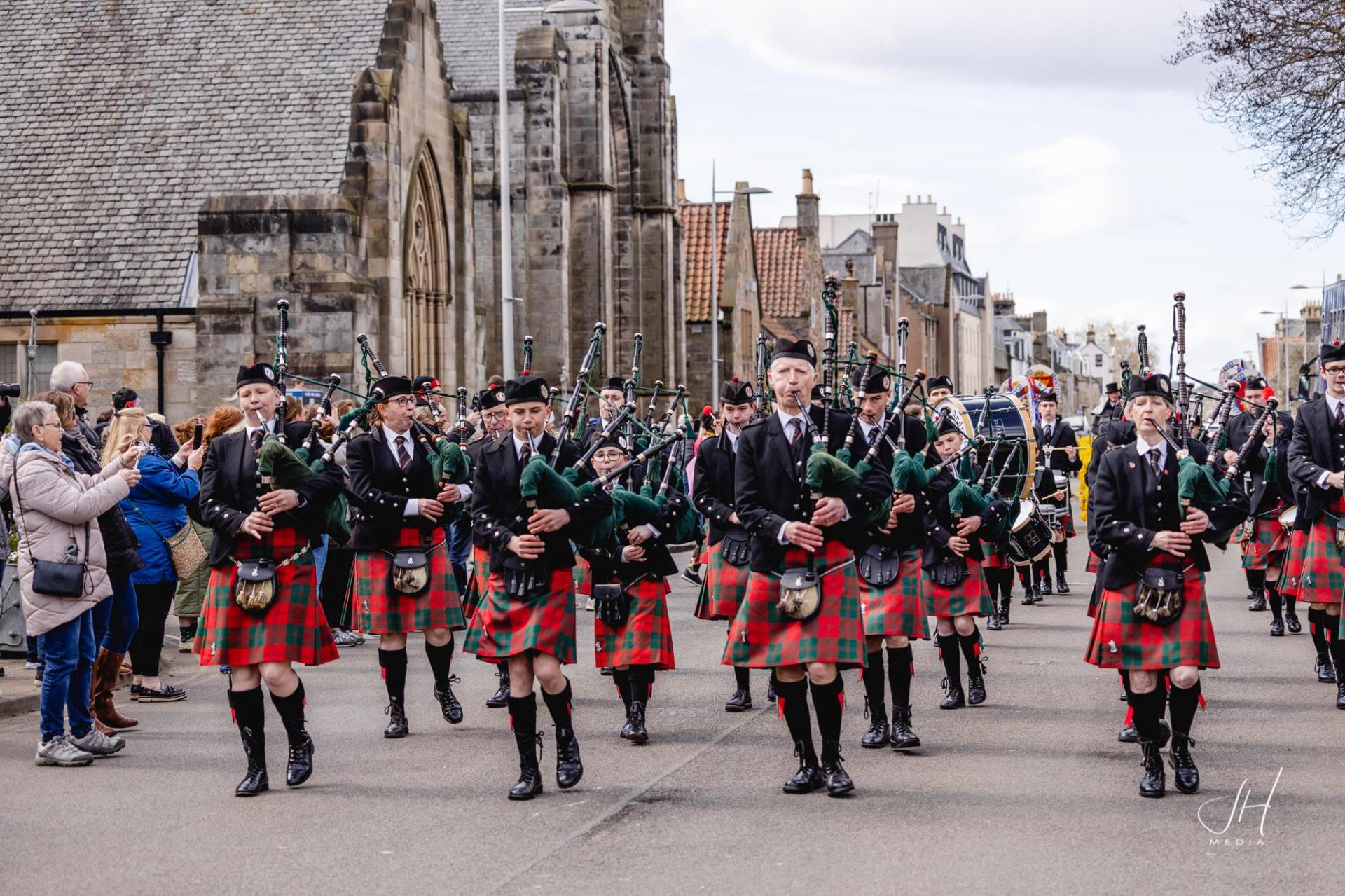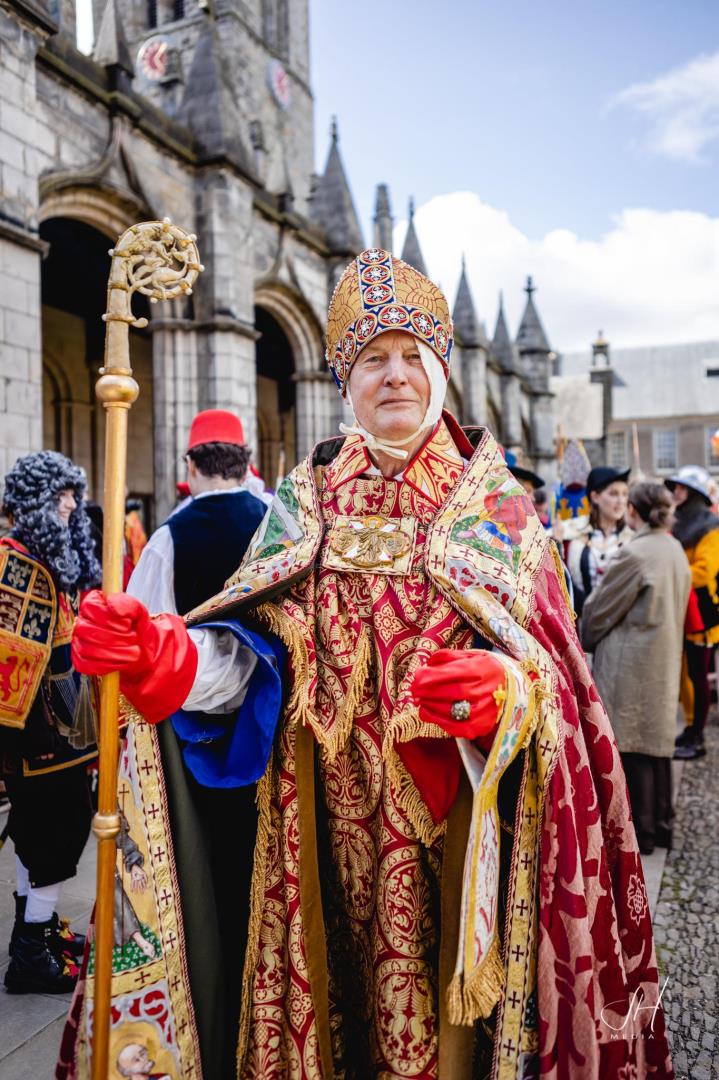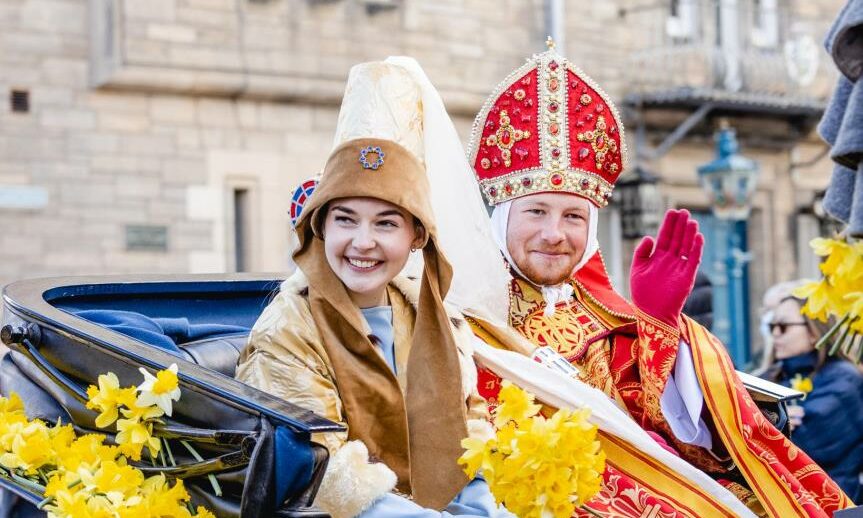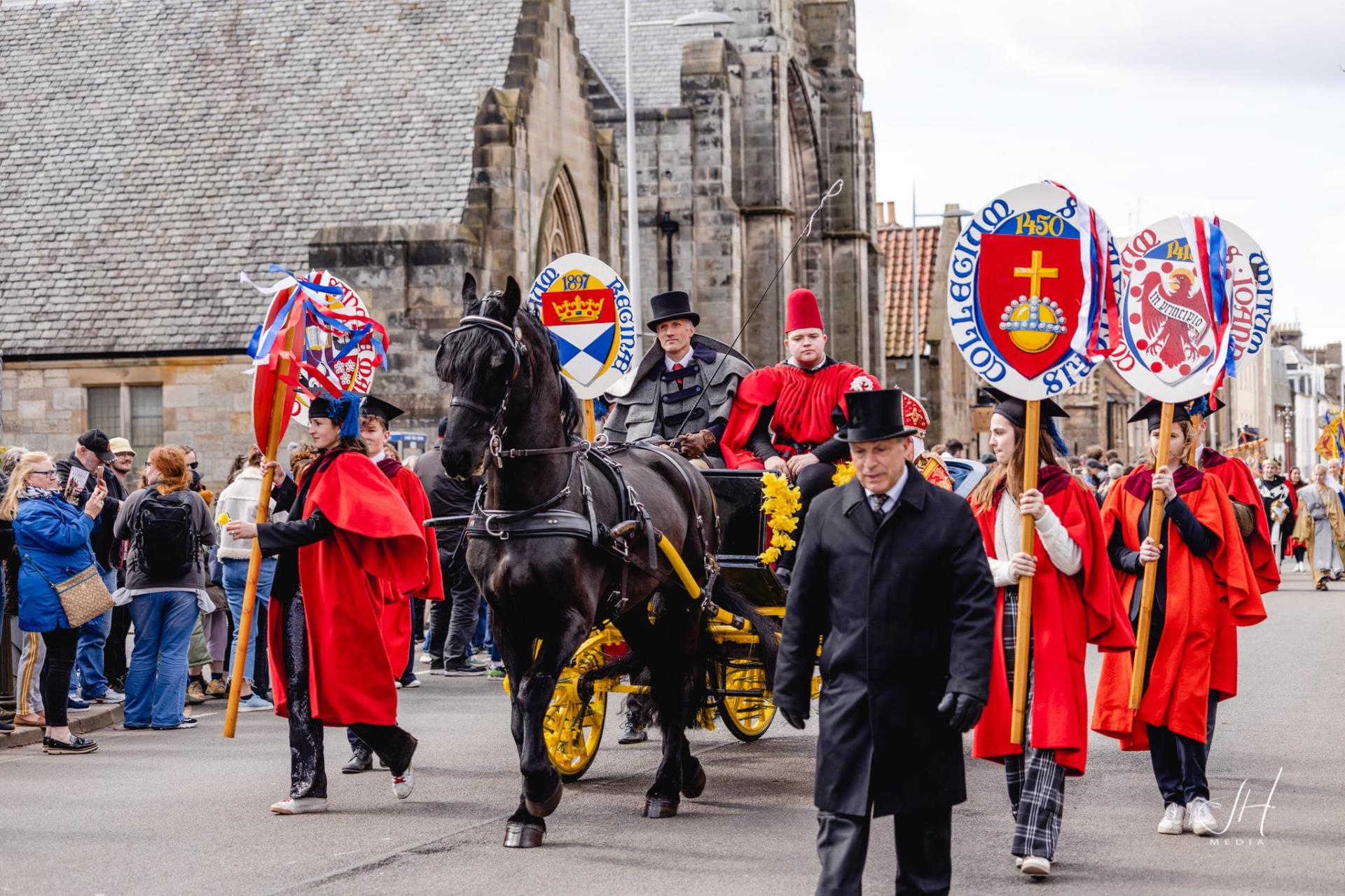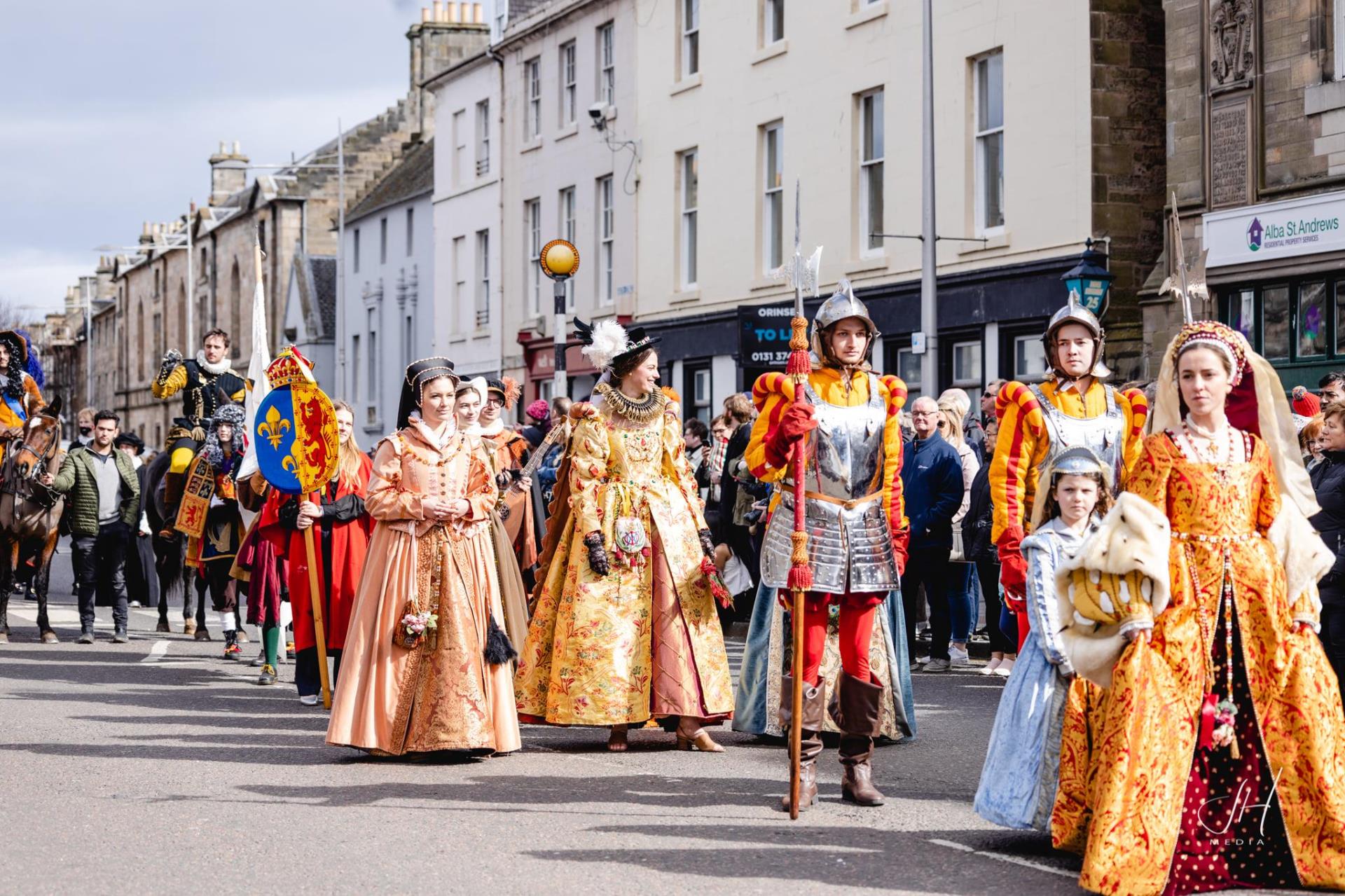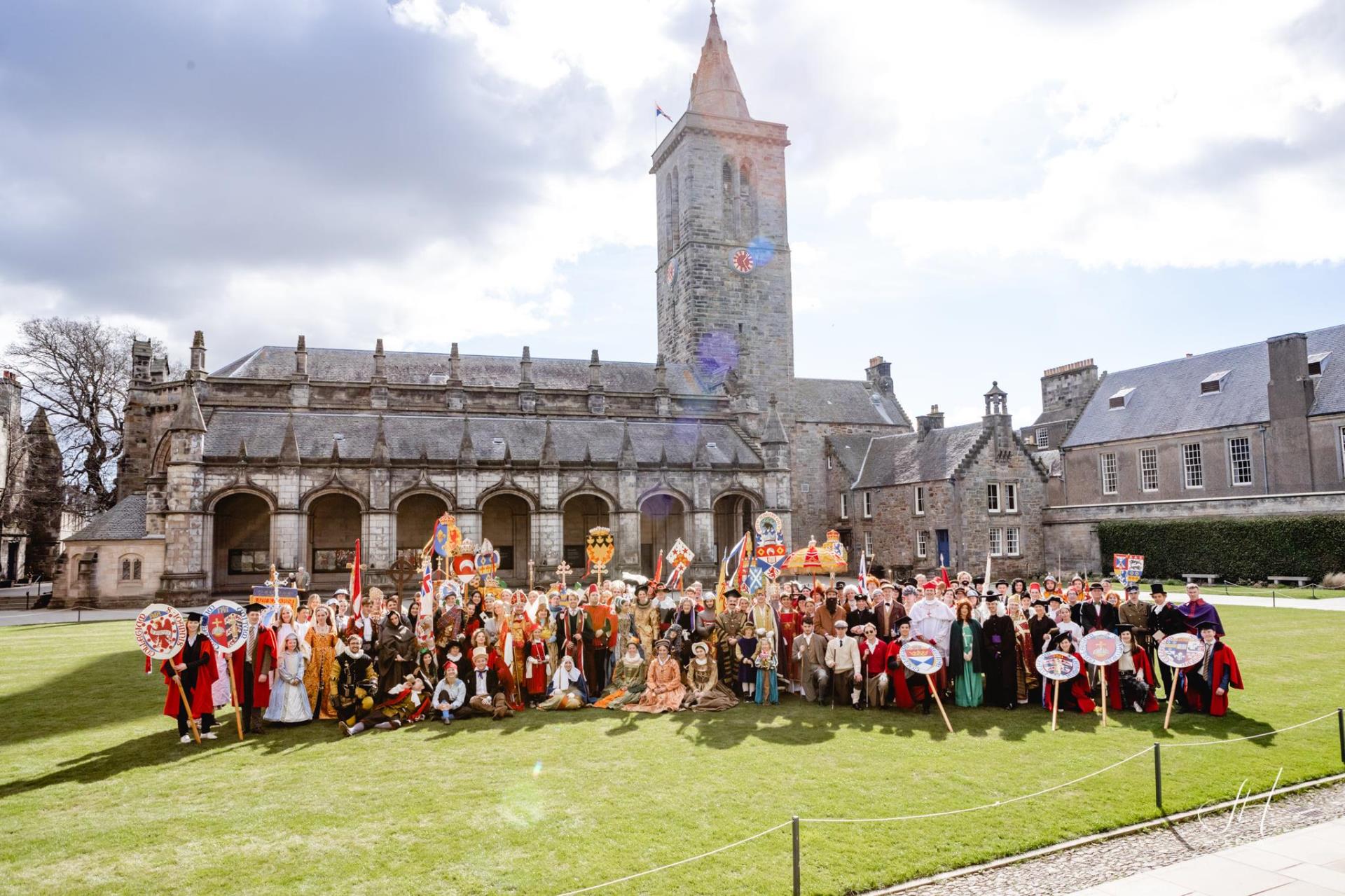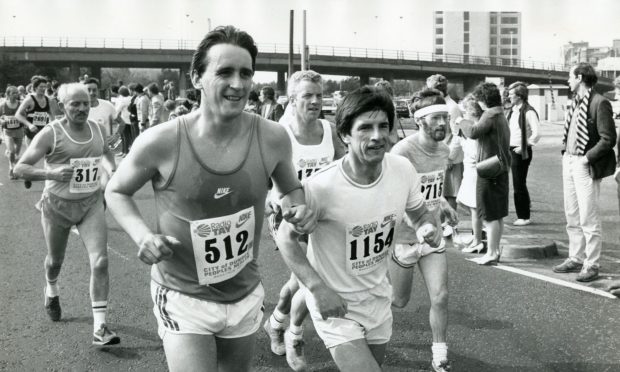The origins of the Kate Kennedy parade can be traced back to the 15th Century.
Legend has it that Lady Katharine (Kate) Kennedy visited her uncle, Bishop Kennedy of St Andrews, every Spring.
Her beauty was so breathtaking that students from the university used to line the streets in the hope of catching a glimpse of her.
The procession has now developed into a celebration of St Andrews’ rich history, showcasing students and locals who dress up as the historical figures who were born, lived, or taught in St Andrews.
The 96th procession took place in the old town last weekend.
That gives us the perfect opportunity to look back at how it all began whilst showcasing some of the fantastic images which were taken at the latest instalment.
The Kate Kennedy Procession was a trademark event of the university almost since its founding in 1413.
It was organised to signify the start of Spring.
In the 1880s, however, it was forbidden due to the raucous behaviour it evoked from the student body.
Some 40 years later, the Kate Kennedy Club was formed in St Andrews in 1926 by two students at the university.
James Doak and Donald Kennedy revived the traditions of Kate Kennedy Day and the annual Kate Kennedy Procession with the help of their principal Sir James Irvine.
The club exists to preserve the procession and it has been organised by them ever since.
It raises thousands of pounds for local charities.
Previous members of the club described some years ago just how the procession acts as a snapshot of the history of St Andrews.
They said: “The procession commences with the prelude, which is Saint Andrew himself, carrying the Saltire cross. He is then followed by a group of pipers, and the early characters.
“Then there are a series of different groups.
“Firstly there are members of the early church, followed by figures from the Wars of Independence, [including] King Robert the Bruce.
“Following that are representatives from the Reformation, the 1715 and 1745 Jacobite revolts, benefactors, students and scholars of the university, and various citizens of the town.
“This group includes A. B. Patterson, the founder of the Byre Theatre.”
The procession concludes with the carriage of Lady Katharine Kennedy herself, alongside her escorting heralds and shield-bearers.
Katharine is then revealed to the town by her uncle, Bishop James Kennedy, who was the founder of St Salvador’s Chapel.
The unveiling of each year’s Lady Kennedy has become the most highly anticipated part of the procession.
She is always played by one of the nine new members who join the society every year, but nobody knows who it will be except for the Lady herself and the previous Kates who selected her.
The rest of the town are kept in the dark until the end of the procession, when she emerges from the cloisters of the chapel.
The Kate Kennedy Club underwent ground breaking transformation in 2012 when its all-male membership announced they would start accepting women members.
The club held a vote in March 2012 over whether or not the club would start accepting women and the vote went in favour of a new, inclusive membership.
The vote occurred after an all-female group called the Kate Kennedy Fellowship were rumoured to be taking over the procession.
The first Kate Kennedy Procession to be organised by both men and women took place in 2013, after two women joined its ranks that year.
Due to the pandemic, last year’s 95th annual procession was unable to go ahead.
That makes this year’s procession, which took place at the weekend, the 95th physical procession, although the 96th in total.
Last year the club compiled a selection of photographs of characters in well-known landmarks around the town to commemorate the occasion.
But nothing compares to seeing the torchlit procession making its way through one of the oldest towns in Scotland.
Long may it continue!
More like this:
General Sikorski in St Andrews? Rare wartime pictures found in forgotten roll of film
Photographer’s childhood memories of St Andrews inspire new book
